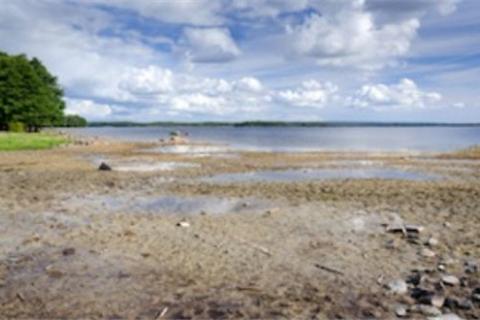
There are so many topics to cover about fishing ... where do you begin? In my recent seminars, I have begun talking about what I call the “Elephant in the Room.” I usually get a lot of blank stares at this point, as I did while I was conducting my seminars at Bass Pro Shops, in Portage, Ind.
So what is the “Elephant in the Room”? It’s our current water levels.
It’s not just here in Northern Indiana; it’s everywhere. I have talked to several people lately from all over the States, and everyone agrees that our water levels are extremely low. There have even been articles written in popular bassin’ magazines about the subject, it’s on the news, it’s everywhere.
The snowfalls we use to have when I was young just don’t happen anymore. I remember long-ago days when snowfall would keep us out of school for weeks. This just isn’t the case anymore. Now, if we get two inches of snow, they close the schools and everything pretty much shuts down. I remember five feet of snow -- snow so deep we couldn’t open our door to leave the house, and yes, I walked to school five miles in it barefoot! We have all heard that story.
So what is my point?
A lot of the people I have spoken with this last month during our in-store events all loved talking about the old days of snow, but now we are paying for the lack of it.
What does this mean to us as fisherman?
This is the question I pose, and now everyone gets it -- no blank stares anymore. The water levels here alone along the Lake Michigan front in northern Indiana is down approximately 17 inches from last year. I just recently checked Trail Creek, a tributary of Lake Michigan that runs through Laporte County and is one of my favorite bass waters, and a majority of my bass hot spots are now about one foot of water, down several inches from last year.
I wondered to myself, “What is this going to mean for us this spring?” I began to access the situation since I will have my boat out in the next couple of weeks.
First of all, safety is an issue. Please be extremely careful when navigating the waters you were once familiar with; obstructions that were under water may now be just below the surface and could cause major damage to your boat or even injury to you.
Just two days ago, I met up with a local Steelhead fisherman who took me on his boat to troll for trout. As we were navigating Trail Creek, I told him that I would be asking over and over again how deep the water was. His Humminbird was out of my sight and I hated to be a bother, but I was so curious -- in some spots you could see the bottom. It was very interesting to say the least as we went back and forth up and down the channel. The water was so shallow that my host had actually filed down the bills on his Smithwick Rattlin' Rogues so they would run very shallow.
We were successful. The fish were still there. But as you can tell, we had to improvise. As fisherman, especially bass fisherman, some of the best lures out on the market today were created from improvising.
My game plan came together as I viewed the screen of our fish finder. It’s time to pull back. What do I mean by this? Well, most of the structure I was targeting when the water levels were up were no longer in the water. Tree branches, rocks, docks -- all bone dry! So I told my partner I was going to have to just pull back and fish structure that I was totally ignoring. This is structure that was out in the middle of the channel. You may find that this is what you might have to do also, even on inland lakes.
Think of it like this: With shallower water, we kind of have a “captive audience.” There are only so many places the fish can be if they are looking for structure.
Now, how am I going to adapt, as I mentioned earlier? Think shallow running and think convenience. I stocked up on several KVD Square Bills, the 1.5 model and the Bass Pro Shops XPS Square Bill Crankbaits. These lures run shallow and will give you the advantage you need.
Also, this is the reason why I love drop shotting so much. If drop shotting is something that you haven’t done, research it, learn it and live it!! Drop shotting is a technique that you can quickly adjust to the water level by simply moving your sinker up and down your tag line. Remember, just change up a little bit, adapt, that’s what we do as fishermen!
by Greg Miller
- 4783 views

